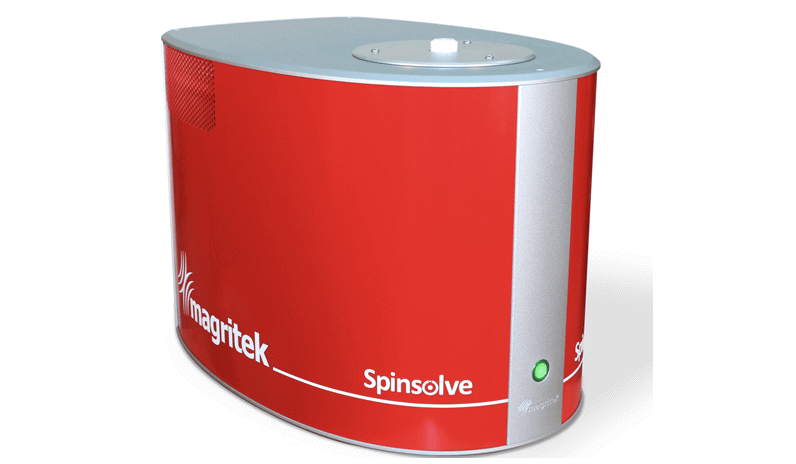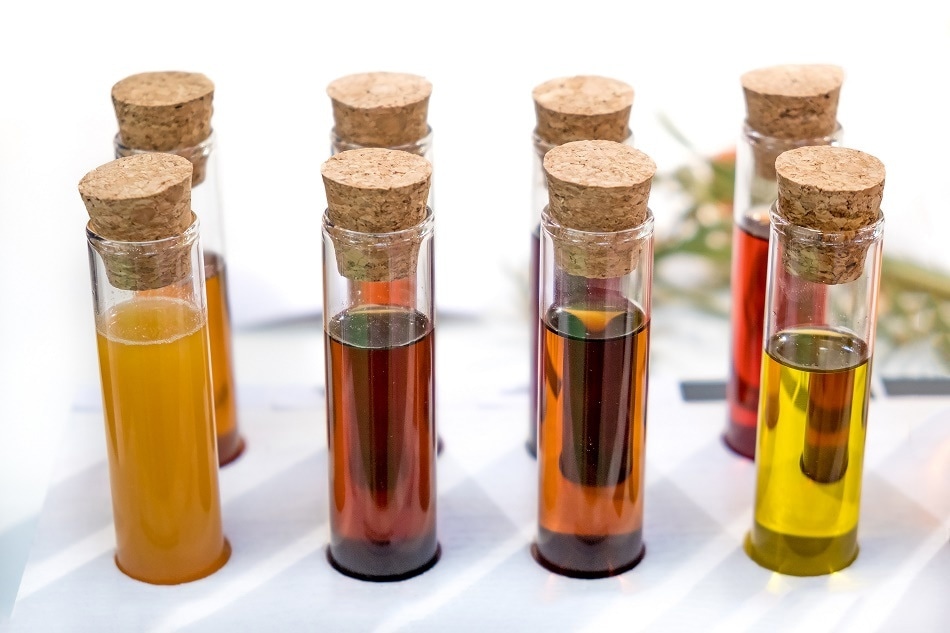
Ultrafast 2D NMR allows 2D NMR scans of complex mixtures to be carried out in seconds, rather than hours. This rapid measurement time has opened the technique to a world of applications such as online reaction monitoring and the rapid determination of complex metabolic mixtures. However, until now, one obstacle has remained - the technique has required prohibitively large and expensive high-field NMR systems. Patrick Giraudeau has changed this by developing the technique on a compact and inexpensive low-field NMR system - the Spinsolve.
We spoke to Patrick Giraudeau about the power of ultrafast 2D NMR, how it can be run on a low field system and his involvement in the EUROMAR 2018 where members of his group will present their research.
How does ultrafast 2D NMR differ from conventional NMR?
In conventional 2D NMR, data is recorded through the repetition of numerous 1D NMR experiments, between which one has to wait several seconds. This procedure is time-consuming and can result in experiment times of several hours.
This long wait time makes conventional 2D NMR ill-suited for high-throughput analysis. This is especially true for dynamic samples, where the system is evolving over time due to biochemical or chemical reactions, or for samples undergoing physical motion in the case of hyphenated techniques.
Ultrafast 2D NMR, in contrast, makes it possible to record an entire 2D spectrum in a fraction of a second. Instead of acquiring the data sequentially, different experiments are performed simultaneously on different slices of the sample. This approach, proposed by Prof. Lucio Frydman in 2002, relies on spatial-encoding and involves concepts inspired from Magnetic Resonance Imaging (MRI).
Ultrafast 2D NMR has been significantly improved over the last decade (by our group and others) to become a relatively versatile analytical tool. Ultrafast 2D NMR has reached a sufficiently high level of maturity to be used in applications where the experiment time is key. At high field, these include:

What is involved in setting up an ultrafast NMR experiment?
Ultrafast NMR requires specific pulse sequences, which combine elements that you will not find in a basic NMR experiment.
The key elements are “chirp” pulses (radiofrequency pulses whose frequency varies over time) and magnetic field gradients, which requires a coil that can generate a variable magnetic field in different parts of the samples. These elements are commonly used on high field NMR spectrometers, but the way that ultrafast NMR combines them to yield a 2D spectrum in a single scan is unique.
This unique scan behavior means ultrafast 2D NMR requires a specific processing algorithm to rearrange and transform the data. Major ultrafast pulse sequences and processing routines can be downloaded from our website.
Why did you choose a benchtop spectrometer, which are usually used for teaching, for your research?
While high-field NMR spectrometers are a central tool in our research groups, the methods we develop on these very powerful –but expensive– machines suffer from limited accessibility. In particular, they cannot be used in small- or medium-sized industries and laboratories who do not have access to high-field NMR equipment. Moreover, due to the technical constraints associated with the use of high-field NMR spectrometers, they cannot be used in demanding environments such as production lines in industry.
In this context, I am convinced that benchtop spectrometers have a great potential for research and industry, and not only for teaching. I also believe that to maximize the potential of benchtop spectrometers, the development of advanced NMR methods (such as ultrafast 2D NMR) is indispensable. I want to ensure that the techniques we develop can benefit all types of research and industry, by not being limited to only prohibitively expensive high-field systems.
This is why I chose to focus my research on the development of new methods for benchtop NMR spectroscopy.

Benchtop NMR systems are better suited to reaction monitoring than high-field systems.
What modifications must be made to a benchtop spectrometer to enable ultrafast NMR?
To implement ultrafast NMR on a benchtop spectrometer, several key elements are necessary. Firstly a robust gradient coil is a must, this is a feature which was not available on benchtop spectrometers when we started to work on this project.
Magritek were convinced by our idea and were happy to implement this hardware modification for us, and it is now also commercially available.
Another very important requirement is a versatile programming interface for the design of pulse sequences, this was already the case for Magritek. Both of these features are not only useful for ultrafast 2D NMR, but also to implement other advanced pulse sequences such as those used for the suppression of strong solvent signals, which is highly important point for reaction monitoring.

The SpinSolve benchtop NMR spectrometer from Magritek
What compounds and chemical species have you been using the Spinsolve to resolve?
Thanks to the features mentioned above and to the methods that we were able to implement and optimize, we have already been able to target different applications in chemistry.
In collaboration with organic chemists from our institute (Prof. François-Xavier Felpin and Dr. Mireia Rodriguez-Zubiri) we showed that ultrafast NMR on a benchtop spectrometer could be used to monitor palladium-catalyzed reactions on line and in real-time.
Working with an organic chemistry group from Rouen (Dr. Julien Legros), we showed that benchtop NMR spectroscopy could be used as an online detector to monitor the destruction of chemical warfare agents such as mustard gas. Several other exciting applications are currently under investigation in the lab!
Does benchtop NMR allow you to work with macromolecules?
Although we have not yet investigated this area, several groups have already shown the great potential of benchtop NMR in this field, in particular for the study of polymers. Early work reported that benchtop NMR could be used for the study of polymerization reactions. More recently, Professor Bernhard Blümich and his colleagues from Aachen highlighted the potential of benchtop NMR spectroscopy for the quality control of raw rubber.
I think that these proof-of-concepts will pave the way to numerous developments and applications in the field in the coming years.
How have you been using the Spinsolve for research into food quality control?
Very recently, we showed that benchtop NMR, and in particular the ultrafast 2D NMR methods that we developed, had a great potential for the quality control of edible oils. Two applications were investigated in a recent paper: the authentication of the botanical origin of such oils, and the detection of adulteration of olive oil by hazelnut oil.
Our results showed that the potential of benchtop NMR in this field could be maximized through the use of ultrafast 2D NMR combined with chemometrics. I believe that this work could open interesting applications for high-throughput quality control in food industry.

Benchtop NMR systems can be used for the identification of food fraud, such as that encountered in the high value olive oil market. Image Credits: shutterstock.com/Luca Lorenzelli
Please could you tell us more about the EUROMAR 2018 conference that you are chairing?
EUROMAR is one of the biggest international conferences in the field of magnetic resonance (ca. 600 attendees from all over the world). The 2018 edition will take place in France for the first time, and the Euromar board of trustees have given me the honor of inviting me to organize and chair this edition in my home city, Nantes, the capital of western France.
EUROMAR 2018 will take place the first week of July, and it will be a major forum to exchange on the most recent breakthroughs in magnetic resonance, including new methods and instrumentation as well as high impact applications in a broad range of scientific fields, from physics and chemistry to biology and medicine.
Will our readers be able to find out more about your research and Magritek there?
Sure! Of course, the research from our group will be presented through oral communications and/or poster presentations, and all the members of the group will be attending the event.
Magritek are also one of the major sponsors of the event, along with other high-field and benchtop NMR manufacturers. They will be here to make you discover their latest innovations…don’t miss this opportunity to update your knowledge in the field of magnetic resonance!

EUROMAR 2018 is taking place this year in Nantes, France. Image Credits: hutterstock.com/SergiyN
What other exciting things are planned for the conference?
First, we have a fantastic list of invited speakers: the conference will feature lectures from top international scientists covering all the fields of magnetic resonance (high-field and benchtop NMR, EPR and MRI). We also expect hundreds of abstract submissions, from which several tens will be selected for oral presentations. Moreover, thanks to a very efficient organizing committee the conference will also be a great opportunity to discover a selection of the best locally sourced food and wines!
Finally, the conference venue, La Cité Nantes Events Center, is located in the heart of the city, at the confluence of the Loire and Erdre rivers, close to many cultural and historical attractions as well as a dynamic restaurant scene. Nantes, European green capital in 2013, is also very close to charming and authentic areas, such as the Muscadet and Loire Valley vineyards or the sandy beaches of South Brittany.
About Patrick Giraudeau

Patrick Giraudeau is a Professor of analytical chemistry at the University of Nantes, currently seconded to the Institut Universitaire de France.
His research activities are focused on the development of quantitative NMR methods for the analysis of complex mixtures, including applications to metabolomics and isotopomics. Research highlights include the development of ultrafast multi-dimensional experiments at high field but also on benchtop spectrometers, with applications in various fields of analytical chemistry.
Photo credit - Michel Giraudeau
Disclaimer: The views expressed here are those of the interviewee and do not necessarily represent the views of AZoM.com Limited (T/A) AZoNetwork, the owner and operator of this website. This disclaimer forms part of the Terms and Conditions of use of this website.